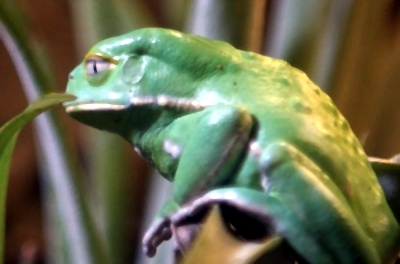
This Mexican relative of the Tiger salamander keeps its external gills throughout life, making it a classic example of the retention of juvenile features into adulthood (technically known as paedomorphism or neoteny). Now critically endangered, since most of its former habitat is occupied by Mexico City, it was an important food for the Aztecs, whose name for it translates as “Water Dog”. First brought to Europe in 1863, it became an important experimental animal in laboratories, where an albino mutation was established.











